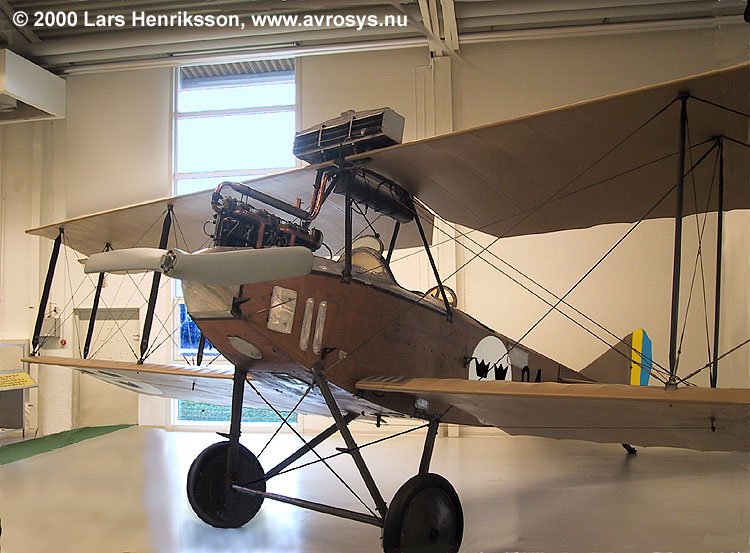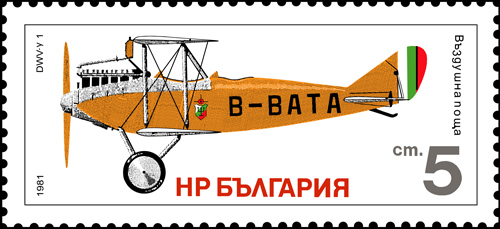|
|
||
|
Albatros
B.II (Reconnaissance aircraft/trainer, 1914-1935) |
||
|
|
Page 1 (of 4) |
|
|
|
||
 |
||
|
In
summer 1914, the German aircraft manufacturer Albatros-Flugzeugwerke GmbH
of Berlin-Johannisthal, sent the military aviator Lothar Wieland on a tour
to several countries in northern Europe to display their type B.IIa. This
aircraft was one of the best basic trainers of its times.
On
the 25th of July, the Albatros landed at Malmen. Next day, the
journey continued to Stockholm. But Wieland made a misjudgement and landed
in a muddy field. During the landing, the aircraft turned around and was
damaged.
Before
repairs managed to be accomplished, the WWI broke out. Lothar Wieland was
sent home to Germany, but the aircraft was kept and later bought by the
Swedish authorities. The Albatros was copied and built by FVM and three
other Swedish aircraft manufacturers. A total of 42 Albatros B.II were
built for the Army Aviation Company in different variations.
In
the beginning, the Albatros was used as a reconnaissance aircraft, but
later many were rebuilt with dual command and used as trainers. In 1926,
when the Swedish Air Force was founded, the Albatros got the designation
Sk 1. (Sk = Skolflygplan/Trainer). The more powerful ”160-trossen”,
fitted with a 160 hp engine, got the designation Ö 2 (Övningsflygplan/Advanced
Trainer).
The
Albatros was built in Sweden (with or without license) by the following
manufacturers:
FVM
(Workshop of the Army Aircraft Company) - (Albatros 120, 1918-1925, 120 hp
Mercedes engine; Albatros 160, 1929-24, 160 hp Mercedes engine).
Svenska
Aeroplanfabriken -
(SAF 3, 1915, 100 hp
Mercedes engine). One of the owners of SAF was Lars Fjällbäck, known as
the designer of Nightingale (”the Hybrid”). It was Fjällbäck who,
during the repairs of Wieland’s B.IIa, made detailed drawings of the
aircraft which made it possible to copy it in Sweden.
Södertelge Verkstäder - (SW
12, 1915-16, 100 hp Mercedes engine; SW 20, 1916-17, 110 hp Scania-Vabis
engine).
Nordiska
Aviatikbolaget - (NAB 9, 1916-18, 110 hp Scania-Vabis engine).
When
the Air Force was founded in 1926, not only the Army Albatrosses were
inherited, but also three German-built machines from the Navy. It was
decided that the Air Force would keep eight 120 hp aircraft
”120-trossar” (Sk 1) and nine ”160-trossar” (Ö 2). The last Ö 2
made service into 1935. The Albatros on the photo at top was built at FVM in 1925 and was written off in 1929. It is fitted with a 120 hp Benz engine. Exhibited at Flygvapenmuseum (Swedish Air Force Museum). Note that the markings are from the Air Force era.
Length:
7,8 m. Span: 13,1 m. MTOW: 1.135 kg. Max. speed: 116 km/h.
|
||
|
For the
Model Builder |
||
|
|
||
|
|
||
 |
||
|
Stamp from Bulgaria issued in 1981. The aircraft is a DAR/Uzunov-1, a design inspired of the well-known Albatross B.II. DAR ( Dargeavna Aeroplanna Rabotilnitsa) in Bulgaria built six of these aircraft in 1926. |
||
|
|
||
|
|
||
|
|
||
|
|
||
|
|
||
|
© Lars Henriksson |
|
Updated 2010-07-17 |
|
Custom Search
|
||
